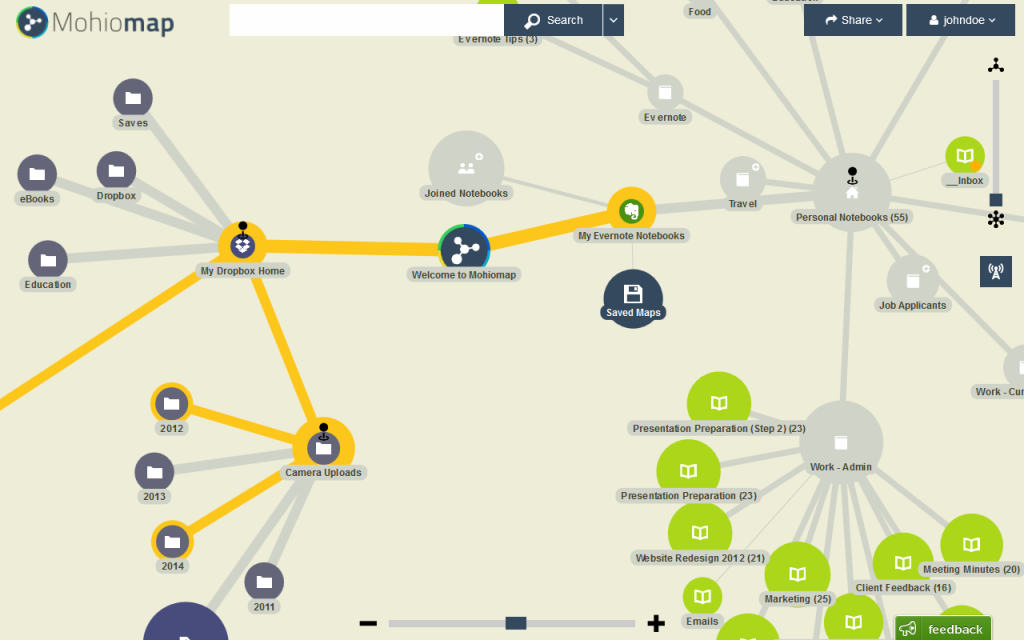Mohiomap – A Visual Alternative To Search
Are you a regular Evernote user? Do you access Google Drive, Dropbox and Evernote ever so often, that inspite of their organisational abilities you’re still stumped? Charles Hirsch, from the University of Auckland (UoA) has developed Mohiomap, a web app that is designed to keep these notepads and storage slots organised with their contents over the years to come.
The app developed by Hirsch and seed funded by New Zealand’s investors, is now offered with freemium features. The free web app allows users to find, navigate and look at the mind maps of notes. At $5, the premium features allow the user to customise themes, add comments or files, create connections between different nodes of the mind map and the access to the analytics dashboard.
Pursuing his Ph.D. in Computer Science from UoA, Hirsch’s idea for Mohiomap, came from research in visual languages and visualisation. The research aimed to understand how visual aids help language management. Evernote became the first app to have Mohiomap integrated to create visuals at its annual development challenge. Exploring the commercial application of the app in solving information overload issues and giving a visual description of a method that helped users organise data, led to Mohiomap. Hirsch, who successfully managed to extend the app’s features beyond Evernote to Google Drive and Dropbox, rolled out a prototype for Twitter, the first time it diversifies from notes and storage to social media.
Explaining why Evernote was the perfect app to try Mohiomap Hirsch says, “We wanted to apply this technology to Evernote because we saw the issue of having a lot of content and how to get a visual overview of what’s in there, to comprehend all this information and knowledge stored in the platform, and make it more accessible.” Barely a year ago, Mohiomap was just a project. The demand for an app in Evernote’s marketplace combined with the promise it showed as a start-up, officially led to the launch of the app.
Hirsch described mind maps as an alternative way of interacting with information besides just exploring it. He adds, “We are used to interacting with data using a list-based approach, a very flat structure of a long list of documents or folders or so on. We offer an alternative way of looking at and interacting with that. By giving more context, it’s naturally a better way of seeing the context of different information, how your documents or certain projects look like, and how these patterns compare to other projects.”
The app will not only be the alternative to the search tab we are accustomed to, but will organise old documents or files and give users an easy grasp of information they have stored on the platforms Mohiomap supports for now. Hirsch’s plans for Mohiomap include extending the feature to social media platforms like Twitter, cloud-storage platforms and other data sources. An app for the iPad is in the works, while the cloud service offers employees a better platform to share these visual maps.
Premium subscriptions provide financial returns for Mohiomap now, but custom products like visualisation databases or document repositories will soon be made available for enterprise customers in the near future.



